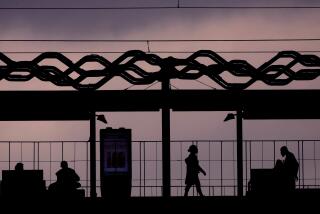Huntington Beach rejects red-light cameras
At a time when red-light cameras are proliferating across Southern California, Huntington Beach is bucking the trend.
The cameras have become controversial in recent years, taking photos of drivers who run red lights, with the proof -- and the ticket -- arriving in the mail. Backers say the cameras improve safety and bring cities needed revenues.
But Ken Small, Surf City’s police chief, isn’t so sure.
He told the Huntington Beach City Council this week that adding cameras at intersections around the city could increase the number of rear-end accidents. And, he noted, the revenue from the red-light devices would not even be enough to pay for the cameras.
Some business leaders in town, including several car dealers, saw it in more bottom-line terms: The cameras might be bad for business, potentially driving off customers.
Among other factors, the cameras could dampen tourism in the beach city, said Mayor Keith Bohr.
“It’s not very welcoming,” Bohr said. He said he would rather have a tourist leave town with pleasant memories and a strong desire to return than go home to a $400 red-light ticket in the mailbox.
The chief agreed. “It just didn’t make any sense,” said Small, whose department spent several months testing the cameras at 18 intersections in the city, including nine along bustling Beach Boulevard. One intersection they reviewed was Talbert Avenue and Beach Boulevard, where 19 motorists were recorded running red lights during the test period. But in all of 2008, department records showed only two collisions related to red-light violations at that intersection.
“When we started looking, a lot of [the violators] were people we normally don’t give tickets to,” Small said. Among offenders, he said, were drivers who failed to make complete stops before making a right turns.
The Huntington Beach Police Department in conjunction with Redflex Traffic Systems launched the study in March to determine the effectiveness of the cameras.
Among other things, Small said, the study showed that revenue from violations would also not cover the monthly cost of maintaining a $6,000 camera. Some intersections that would require four cameras would cost the city $24,000 a month in maintenance.
The cameras have met with mixed results in Southern California and, in particular, in Orange County, where only five cities use them.
According to a report by the Orange County Grand Jury released in 2005, both Garden Grove and Santa Ana had problems tracking the revenue from the citations. The problems have since been rectified, officials said.
In Irvine, two cameras where installed in 2001 but were taken down quickly, according to a city spokesman, who could not explain why they were removed.
In Los Angeles County, Paramount chose to shut down its program in 2006 after running a $178,000 deficit in two years.
Compton also canceled its program because of cost concerns.
“I call them scam-ras,” said resident Norm Westwell, president of Huntington Beach’s Ocean View School District.
Swayed by the police chief’s less-than-enthusiastic report, the City Council agreed to tap the brakes on the red-light cameras for now.
--
More to Read
Sign up for Essential California
The most important California stories and recommendations in your inbox every morning.
You may occasionally receive promotional content from the Los Angeles Times.











